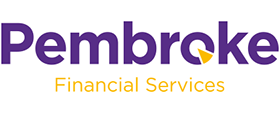The Bank of Mum and Dad has become an integral part of the property market. Many first-time buyers would struggle to secure a home without the help of their parents and other family members.
However, support doesn’t have to mean handing over a lump sum to use as a deposit, as there are other options.
According to Lloyds Bank, the average price a first-time buyer pays is £264,140. As house prices have climbed, it’s not surprising that more aspiring homeowners are finding themselves relying on some form of support.
This may mean moving in with a parent to reduce outgoings or receiving a lump sum to use as a deposit.
In 2021, the Bank of Mum and Dad supported almost half of first-time buyer transactions, according to research from Savills estate agent. It’s estimated that family members contributed almost three times the value of Help-to-Buy loans by handing over £9.8 billion.
However, gifting a deposit isn’t the only way to help your child get on the property ladder. You can use some types of mortgages to reduce the deposit needed, increase the amount available to borrow, or make a mortgage more affordable.
These three options help first-time buyers by reducing how risky they are to lend to. While you may not be handing over a lump sum, you should review these options with your own financial circumstances in mind – remember that you could be taking on some of the responsibility for the mortgage.
1. Family mortgages
If you have a lump sum that you don’t need access to now, a family mortgage can be useful.
With this option, the homebuyer can secure a mortgage with a smaller or no deposit. Instead, your lump sum is placed in a savings account that is held as security for their mortgage.
The benefit of this option is that your savings will still be earning interest and after a defined period, usually five years, you’ll get your money back (assuming the buyer has kept up with repayments).
If you have money that you can’t gift because it’s earmarked for long-term goals, like your retirement, a family mortgage means you can still lend support.
However, you should keep in mind that the lump sum is used as security. If the buyer defaults on their mortgage, you may lose some or all of the money in the savings account.
In addition, you won’t be able to access the savings until the defined period has ended, and the interest rate offered may not be as attractive as other alternatives.
2. Guarantor mortgages
A guarantor mortgage can help a first-time buyer purchase a home with a lower deposit and may mean they’re able to borrow more. This is because the guarantor takes on some of the risks of the mortgage.
You will need to prove that you could make repayments if the homeowner defaults on their mortgage. This will typically mean offering your home or savings as security against the loan or demonstrating your income.
Be aware that, if you’re the guarantor and your child misses their mortgage payments, you could be liable for any shortfall if the property is repossessed or sold.
There may be an upper age limit for guarantor mortgages, often linked to your retirement date.
3. Joint mortgages
A joint mortgage means taking out the mortgage with your child, enabling them to borrow more and potentially access a better interest rate.
With this option, you will need to apply for the mortgage with your child. The lender will consider your income, credit score and other factors alongside your child’s. If you’re paying off a mortgage on your own home, this will affect affordability checks.
This is usually only an option if you’re still working and won’t reach retirement age during the term of the mortgage.
As you’ll often be named on the mortgage, you will be liable for repayments and will be affected if your child defaults.
Consider the tax implications of offering support
Before you offer support, it’s important to consider the tax implications.
If your name will appear on the deeds of the property, you could be liable for Stamp Duty, even though your child is a first-time buyer and likely to qualify for Stamp Duty relief.
A Stamp Duty bill could also be higher than expected if you own your home or other properties, as you’ll be subject to the 3% Stamp Duty surcharge for additional properties.
There may be things you can do to reduce the tax liability. For example, choosing a “joint borrower, sole proprietor” mortgage. This would mean your name isn’t on the property deeds.
If you have questions about potential tax and what you can do to mitigate a bill, please contact us.
Do you need help understanding the support you can offer?
If you’re considering helping your child or other family members get on the property ladder, but aren’t sure what your options are, please contact us. We can go through the different mortgage options and the pros and cons of each so you can have confidence in your decision.
Please note: This blog is for general information only and does not constitute advice. The information is aimed at retail clients only.
Your home may be repossessed if you do not keep up repayments on a mortgage or other loans secured on it.
The Financial Conduct Authority does not regulate tax planning.
















